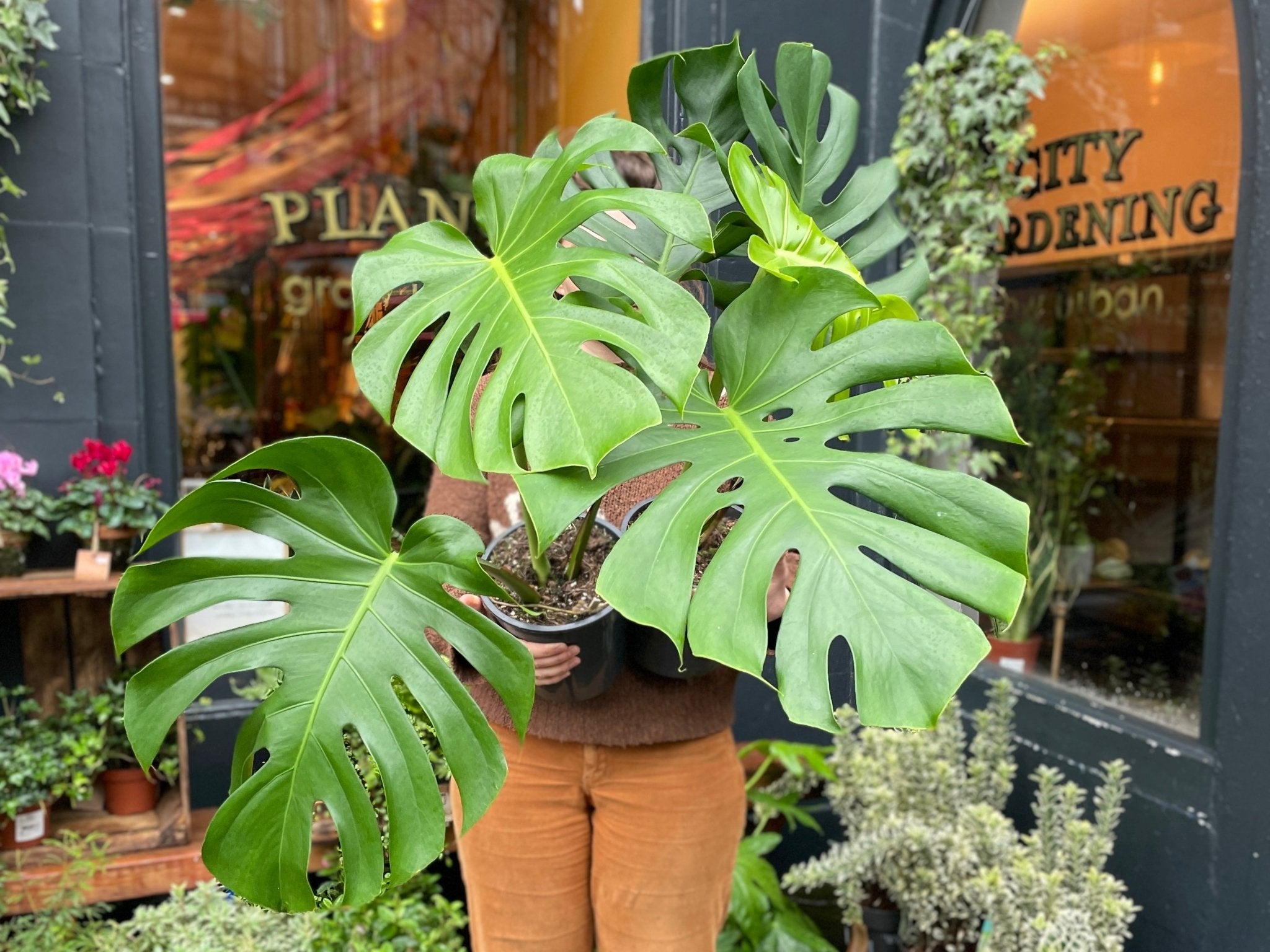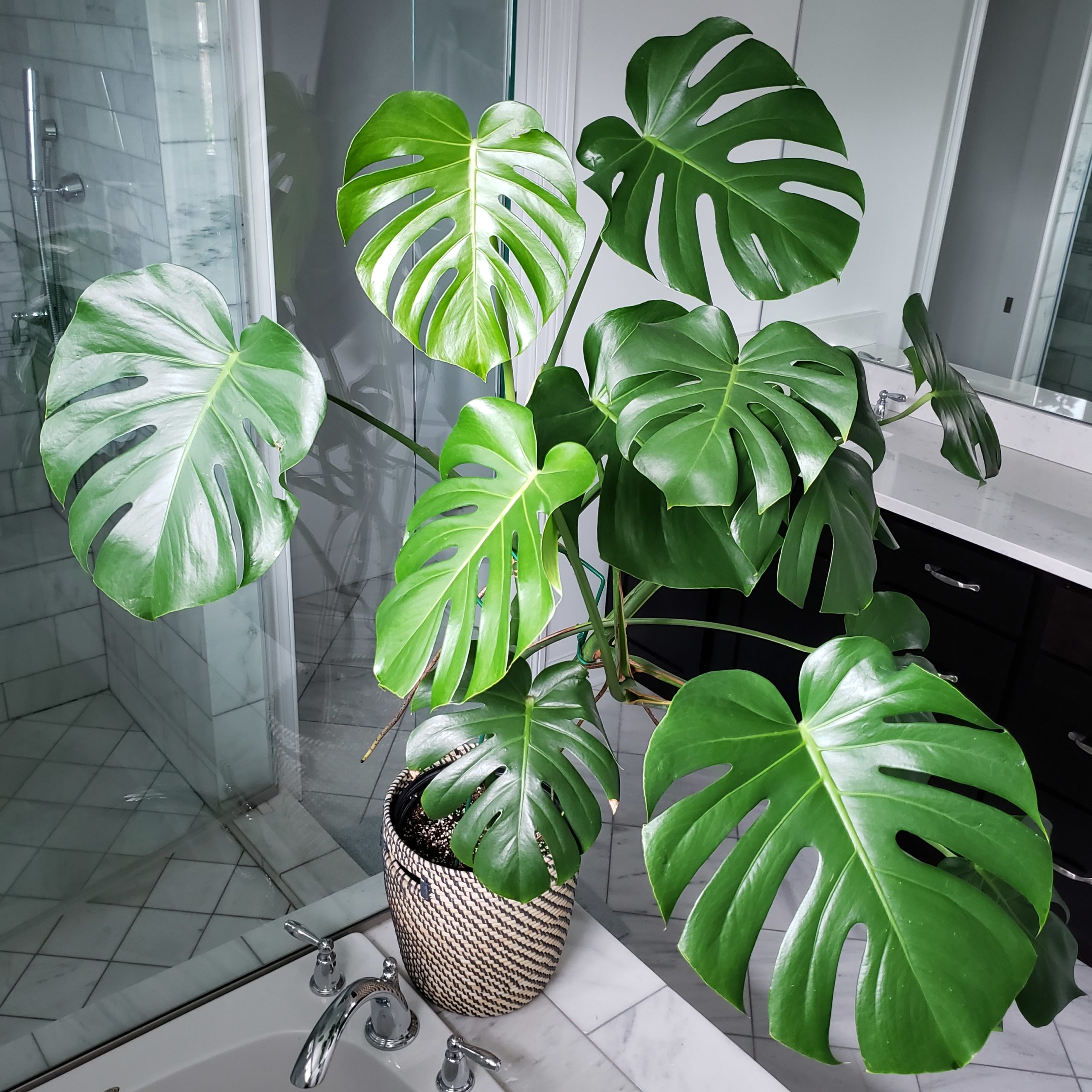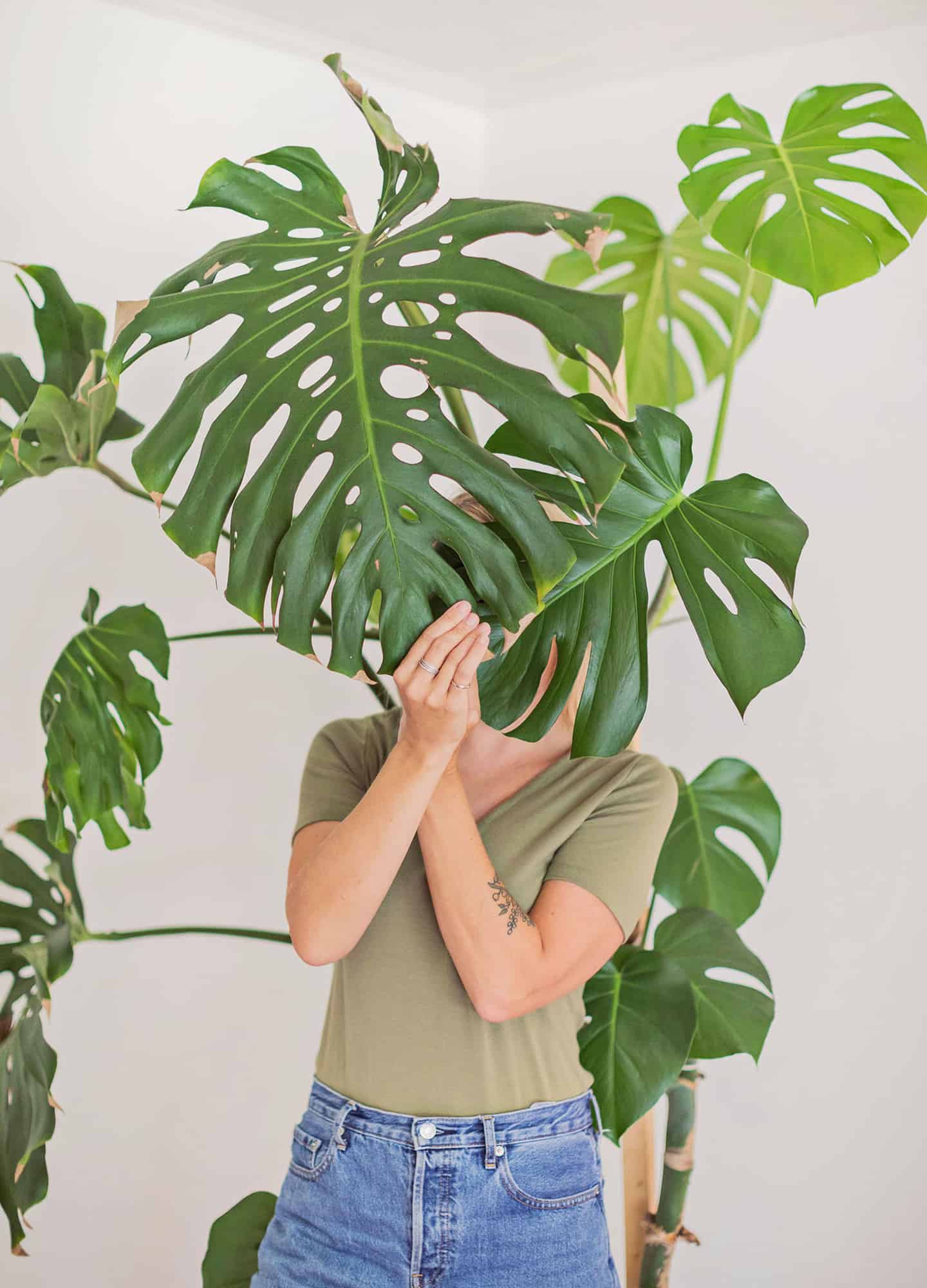What Exactly IS a Monstera Deliciosa?
So, the Monstera Deliciosa goes by a few names. You might hear it called the “Swiss Cheese plant” because of those cool holes and splits in its leaves. Sometimes it’s even called the “split-leaf philodendron,” although technically, it’s not a true philodendron. It’s native to the tropical rainforests of Central and South America, so it’s used to warm, humid conditions and dappled sunlight.
Those Amazing Leaves
Let’s be honest, the leaves are the star of the show with this plant. When they’re young, they’re usually heart-shaped and solid. But as the plant matures, those iconic fenestrations (that’s the fancy word for the holes and splits) start to appear. No two leaves are exactly alike, which gives each plant its own unique personality. These splits aren’t just for looks, though. In the wild, they help the leaves withstand strong winds and allow sunlight to filter down to lower leaves. Pretty clever, huh?

How Big Can It Get?
Now, if you let a Monstera Deliciosa do its thing, it can get pretty big! Indoors, you can expect it to reach several feet tall and wide. In its natural habitat, it can climb up trees and get absolutely enormous. So, keep in mind that this isn’t a tiny little desk plant forever. You’ll need to give it some room to grow or be prepared to prune it occasionally.
Taking Care of Your Monstera
The good news is that Monsteras are generally pretty forgiving. Here’s a rundown of what they like:

Light
They thrive in bright, indirect light. Think of the light filtering through the canopy in a rainforest. Direct sunlight can actually scorch their beautiful leaves, so avoid putting them right in a south-facing window unless it’s diffused. If your plant isn’t getting enough light, you might notice it getting leggy (long stems with few leaves) and the fenestrations might not develop as much.
Water
It’s all about balance when it comes to watering. You want the soil to dry out a bit between waterings. Stick your finger about an inch or two into the soil – if it feels dry, it’s time to water. When you do water, water thoroughly until you see it draining out the bottom of the pot. Overwatering can lead to root rot, which is a big no-no for Monsteras. In the winter, when the plant isn’t growing as actively, you can water less frequently.

Soil
A well-draining potting mix is key. You can use a standard indoor potting mix, but adding things like perlite or orchid bark can help with drainage and aeration, which Monsteras appreciate.
Humidity
Coming from a tropical environment, Monsteras love humidity. If your air is particularly dry, especially in the winter, you might want to consider ways to increase humidity. You can mist the leaves regularly, use a humidifier, or place the pot on a pebble tray filled with water (just make sure the bottom of the pot isn’t sitting directly in the water).
Temperature
Average room temperatures between 65-80°F (18-27°C) are ideal for your Monstera. They don’t like extreme temperatures or drafts.
Support
As your Monstera grows, it will likely appreciate some support to climb on, mimicking its natural growth habit. A moss pole, trellis, or even a sturdy stick can work well. This encourages larger leaf growth and those beautiful splits.
Propagation
Want more Monsteras? You can easily propagate them through stem cuttings. Look for a node (the little bump where a leaf or aerial root grows from), make a clean cut below it, and you can root it in water or directly in soil. It’s a fun way to expand your plant collection or share with friends.
Potential Problems
Like any houseplant, Monsteras can sometimes run into issues. Keep an eye out for pests like spider mites or mealybugs. Yellowing leaves can be a sign of overwatering or underwatering, so pay attention to your watering habits. Brown, crispy edges might indicate low humidity or inconsistent watering.
Why All the Fuss About Monsteras?
Beyond their striking appearance and relatively easy care, Monsteras have become incredibly popular for a few reasons. They bring a touch of the tropics indoors, adding a lush and vibrant feel to any space. Their unique leaf patterns are visually interesting and constantly evolving as the plant matures. Plus, they’re pretty resilient, making them a good choice for both beginner and experienced plant parents. They’re definitely more than just a fleeting trend; they’re a classic for a reason.
Conclusion
The Monstera Deliciosa is more than just a pretty face in the plant world. With its dramatic, ever-changing leaves and relatively easy-going nature, it’s a fantastic addition to any indoor jungle. Give it the right light, water, and a little bit of love, and you’ll be rewarded with a stunning and thriving green companion for years to come.
Frequently Asked Questions About Monstera Deliciosa
How often should I repot my Monstera?
You’ll generally need to repot your Monstera every 1-2 years, or when you notice the roots starting to grow out of the drainage holes. Choose a pot that’s only slightly larger than the current one.
Why aren’t the leaves on my young Monstera splitting?
The iconic splits and holes usually develop as the plant matures. Young Monsteras typically have solid, heart-shaped leaves. Be patient, and ensure your plant is getting enough bright, indirect light to encourage those fenestrations to appear over time.
Are Monstera Deliciosa plants toxic to pets?
Yes, unfortunately, Monstera Deliciosa plants contain calcium oxalates, which can be toxic to cats and dogs if ingested. They can cause irritation of the mouth, throat, and stomach. It’s best to keep them out of reach of your furry friends.
How do I clean the leaves of my Monstera?
Dust can accumulate on the large leaves of your Monstera, which can hinder photosynthesis. Gently wipe the leaves down with a damp cloth every few weeks to keep them clean and shiny.
My Monstera has aerial roots. What should I do with them?
Monstera Deliciosa Plant
